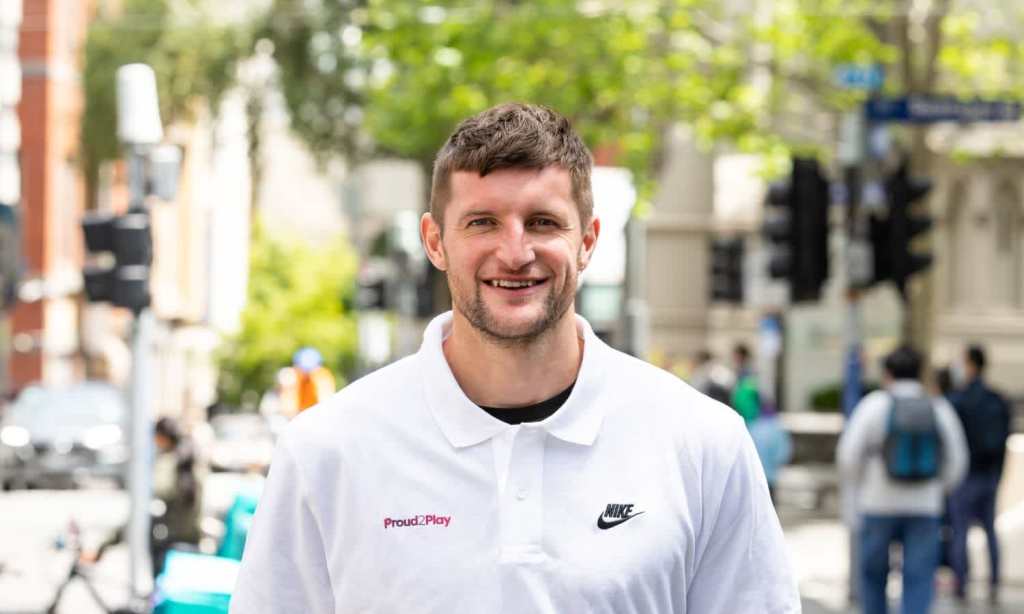While it seems hard to believe, up until a few years ago, Australia hadn’t seen a single male footballer come out as gay. That all changed in May 2019, when Andrew Brennan, an Australian professional footballer who plays for South Melbourne, came out, forever changing the football world in Australia and paving the way for other LGBTQIA+ athletes to follow suit.
“I feel one of the hardest barriers to overcome as a young member of the LGBTQIA+ community in sport is feeling discriminated against,” says Brennan, who works with Nike’s Proud2Play LBGTQIA+ Coaching and Mentorship Program to overcome these barriers and inspire change.
“Dismissive or offensive words or actions can have lasting effects on people who are struggling with their sexual or gender identity and not quite feeling as though they belong.”

Here, we chat to Brennan about what he was most afraid of when he came out, what the response was and why LGBTQIA+ athletes hiding their sexuality is such an important issue to be aware of.
The Latch: What was it like growing up and having to hide your sexuality?
Andy Brennan: Growing up playing sport and feeling as though you don’t quite belong amongst your peers can have lasting effects. If you can picture the young player who is terribly hard on themselves for making a mistake, whose confidence can be a shock in a moment or mistakes linger in their minds — that is the result of feeling alone and intrinsically different.
I felt these things for so long. Up until I accepted my sexuality, I always felt that something was wrong with me. Creating environments where young LGBTQIA+ people do not have to suffer like this should be everybody’s aim.
TL: What were you most afraid about when coming out in the sports world?
AB: I was worried about being rejected. Rejected by my friends, coaches, teammates and even family. Saying it now feels ridiculous to me (because I know how supportive and loving everyone has been), but when you’re alone and down inside your own head, the last thing you want is to ruin the love and support you have around you. There was a real fear that my being gay could really isolate me.
There are stages that come with ‘coming out’. First, you must come to accept yourself for who you are. This, for me, was the hardest. I accepted myself for the first time at 25. That was because I knew I couldn’t live like I was any longer. Then you must ‘tell’ or ‘show’ (by who you are with) the world who you are. You test the water with a close person and then continue on that path. Telling each person is a new battle with new fears.
But when you are prepared to quit playing and let friendships go by the wayside in the pursuit to be who you are, you know you must keep going.
TL: What was the response?
AB: I really felt that playing football and being gay were not congruent. Boy, how I was wrong. The response was special. Special because where my mind was, and where it ended up, were truly on the opposite ends of the scale. I felt more confident and stronger, and this showed playing sport. I no longer hide away in my shell when I make a mistake. Or when someone has some stern words. I feel on the front foot, rather than on the back foot.

This is why I am so passionate about helping change the landscape for young LGBTQIA+ people. No one should feel this way. Coaches have a huge role to play in building a safe and supportive environment, no matter who the person is.
TL: Why is LGBTQIA+ youth hiding their sexuality in sport such an important issue to be aware of?
AB: Hiding who you are in sport and society has huge ramifications on your mental state. Feeling as though you don’t belong, that something deep in you does not configure to society’s standards, leaves you feeling ashamed of who you are. In that deep mental chasm are fear, self-blame and isolation.
In a recent study, 70% of people felt that transgender or gender diverse people would not be welcome in their club. This attitude affirms young LGBTQIA+ people’s fears, and we must change it to make LGBTQIA+ inclusion a priority. Reduce prevalent ignorance of homophobia and discrimination towards this community. Visibility is power, and sport is visibility.

Through sport, we have the power and platform to represent the LGBTQIA+ community and change those attitudes that are so damning to an already vulnerable community. Inclusive language and registration forms, mixed-gender teams, non-binary uniforms and gender-neutral bathrooms are small changes that make a contribution to creating visibility for LGBTQIA+ athletes. This can create an attitude change. We must make these changes.
So, for us, it means so much to have the support of a brand like Nike to help spur on that change needed for athletes, but more so at that grassroots level, which is where the big gap is — with a joint objective to build a future where everyone can win.
Read more stories from The Latch and subscribe to our email newsletter.







